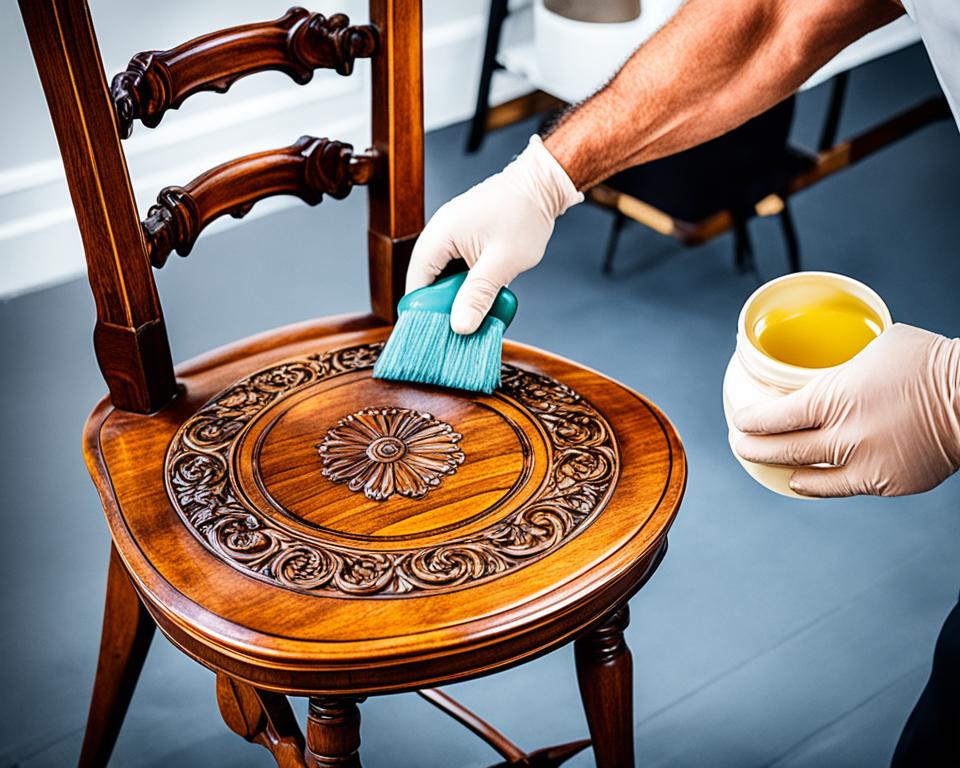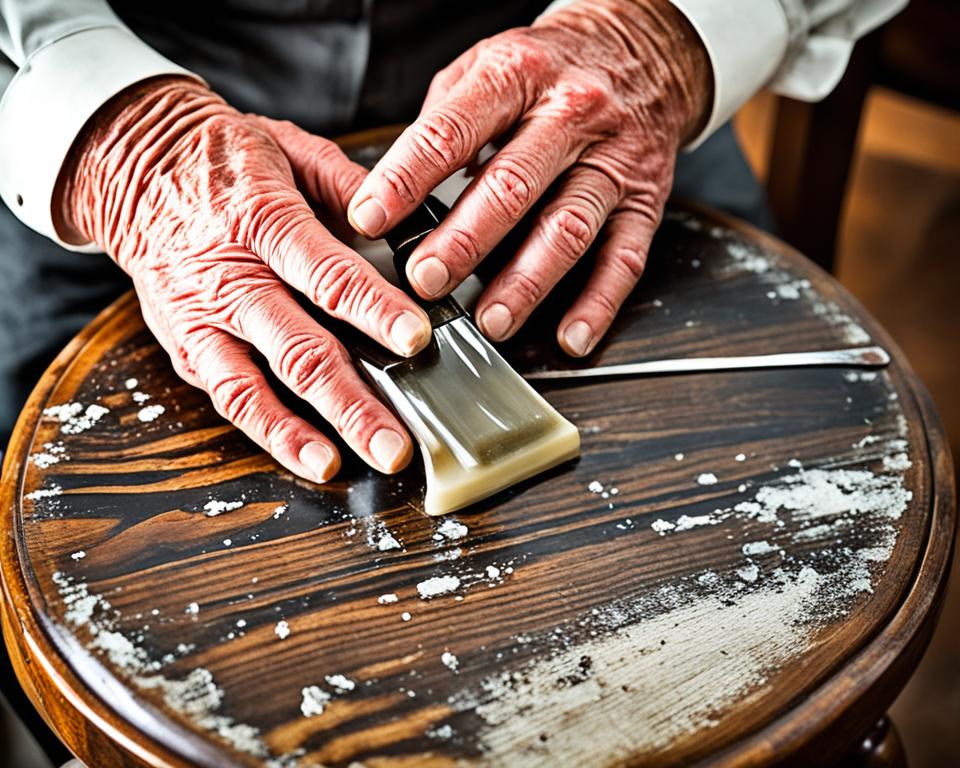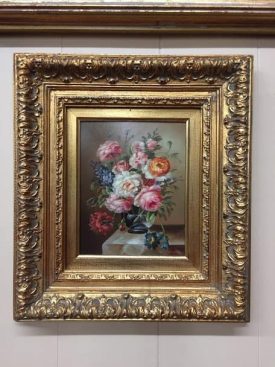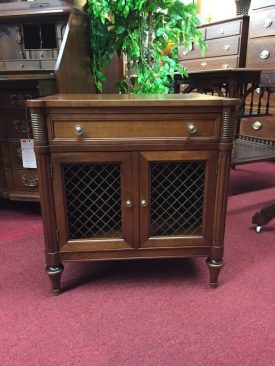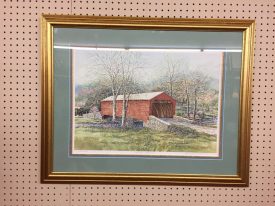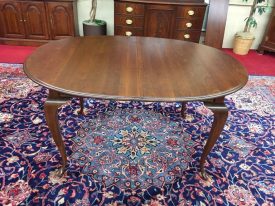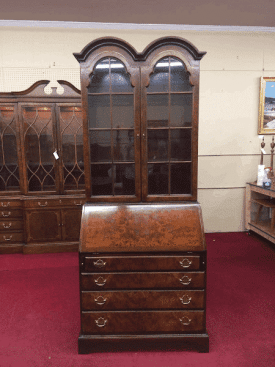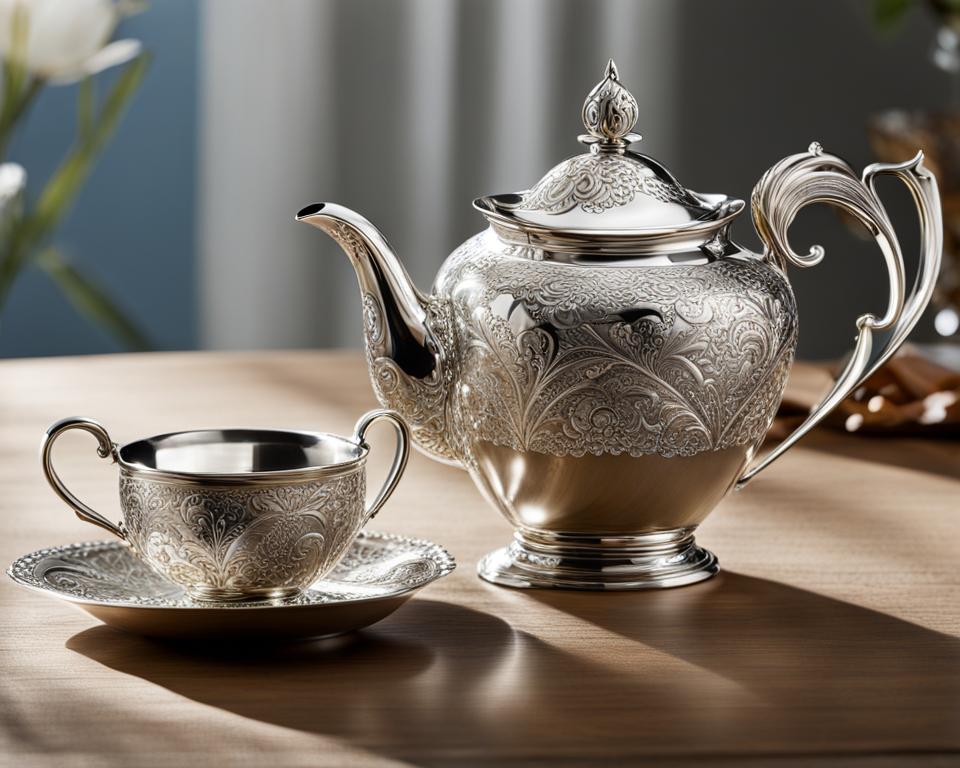Cleaning antique wood furniture is crucial for preserving its value and appearance. By properly caring for your antique pieces, you can bring out their natural beauty and protect them from damage. In this guide, we will provide you with expert tips and tricks on how to clean and maintain your antique wood furniture.
Whether you have inherited a family heirloom or found a hidden gem at a vintage store, antique wood furniture requires special attention to keep it looking its best. Regular maintenance and cleaning can help extend the lifespan of these timeless pieces and enhance their charm.
Key Takeaways:
- Properly cleaning antique wood furniture is essential for preserving its value and appearance.
- Determine the type of wood finish before cleaning to ensure the right approach.
- Use appropriate cleaning solutions and techniques to protect the wood and prevent damage.
- Waxing can provide additional protection and enhance the beauty of antique wood furniture.
- Avoid common mistakes and damaging practices when caring for antique wood furniture.
Determining the Wood Finish
Before you start cleaning your antique wood furniture, it is important to determine the type of wood finish it has. This will help you choose the right cleaning method and avoid damaging the furniture.
To determine the wood finish, you can perform a simple test using denatured alcohol. Here’s how:
- Select an inconspicuous area of the furniture where the test won’t be noticeable.
- Apply a small amount of denatured alcohol to a clean cloth or cotton ball.
- Gently rub the alcohol onto the chosen area of the wood.
- Observe how the wood reacts to the alcohol.
If the finish dissolves or becomes sticky, it is likely shellac. Shellac finishes typically require refinishing and may be more delicate and sensitive to certain cleaning methods. It’s best to consult a professional for shellac finishes.
If the finish remains unchanged, it is likely lacquer, polyurethane, varnish, or oil. These finishes are more durable and can be cleaned using the methods we will discuss later in this guide.
Note: It’s important to perform this test in an inconspicuous area to avoid damaging the furniture. If in doubt, always consult a professional before attempting any cleaning or restoration techniques.
Example:
“I was unsure about the type of finish on my antique table, so I decided to perform the denatured alcohol test. I applied a small amount of alcohol to a cloth and gently rubbed it on an inconspicuous area. To my relief, the finish remained unchanged, indicating a durable lacquer. This allowed me to proceed confidently with the cleaning process. It’s always better to be safe than sorry when it comes to cleaning delicate antiques!” – Amanda, Antique Furniture Enthusiast
| Wood Finish | Description |
|---|---|
| Shellac | A traditional finish with a lustrous appearance, but it can be more susceptible to damage and may require refinishing. |
| Lacquer | A durable and glossy finish commonly used on antique furniture. |
| Polyurethane | A tough and resistant finish that provides excellent protection. |
| Varnish | A transparent, hard finish that enhances the natural beauty of the wood. |
| Oil | A popular finish that penetrates the wood for a natural look and feel. |
Table: Types of Wood Finishes
Cleaning Antique Wood Furniture: Step by Step
Once you have determined the wood finish of your antique furniture, it’s time to start the cleaning process. By following a step-by-step approach, you can ensure that your wood furniture is properly cared for and maintains its timeless beauty. Here’s a guide to help you clean your antique wood furniture:
Gather Supplies
Before you begin cleaning, gather the necessary supplies to make the process seamless. You will need:
- Oil soap
- Cotton cloths
- A small mixing bowl
- Measuring cup
- Fork or whisk
- Rubber gloves
Create a Cleaning Solution
Mix oil soap with water in the small mixing bowl. Follow the ratio recommended on the oil soap packaging to ensure proper dilution. Stir the mixture with a fork or whisk until well combined.
Clean the Furniture
With your cleaning solution and cotton cloth ready, you can now start cleaning your antique wood furniture:
- Dampen a clean cotton cloth with the cleaning solution.
- Begin cleaning the furniture, ensuring to follow the direction of the wood grain.
- Use circular motions to gently clean away any dirt or grime.
Dry Thoroughly
After cleaning the furniture, it is crucial to dry it thoroughly to prevent any moisture damage. Use a dry cotton cloth to wipe away any residual moisture and ensure the wood is completely dry.
By following this step-by-step cleaning process, you can effectively remove dirt, restore the natural beauty of your antique wood furniture, and preserve it for future generations to enjoy.
Cleaning Antique Wood Furniture with Mildew
If your antique wood furniture has been affected by mildew, it requires special attention to ensure its restoration. To effectively remove mildew and restore the original beauty, gather the following supplies:
- Distilled white vinegar
- An air mask
- Goggles
- Rubber gloves
- Cotton cloths
- Linseed oil, olive oil, or vegetable oil
To begin the cleaning process, follow these steps:
- Clean the furniture surface using a soft cloth, removing any loose dirt or debris.
- Prepare a cleaning solution by mixing equal parts oil and distilled white vinegar in a bowl.
- Apply the cleaning solution onto a clean cotton cloth.
- Gently scrub the affected areas of the wood furniture with the cloth, ensuring to target the mildew growth.
- Continue wiping away the loosened mildew until the surface is clean.
- If necessary, repeat the process to completely remove the mildew.
Remember to always wear protective gear like an air mask, goggles, and rubber gloves when dealing with mildew. Proper ventilation is essential to avoid inhaling any harmful particles during the cleaning process.
Once you have successfully removed the mildew, consider applying a thin layer of linseed oil, olive oil, or vegetable oil to the antique wood furniture to restore its natural luster and provide protection against future damage. Use a clean cotton cloth to gently apply the oil in the direction of the wood grain.
By following these steps, you can effectively clean your antique wood furniture from mildew and restore its beauty to its former glory.
| Cleaning Method | Effectiveness | Ease of Use | Cost |
|---|---|---|---|
| Vinegar Cleaning Solution | Excellent | Easy | Affordable |
| Hydrogen Peroxide | Good | Moderate | Moderate |
| Bleach | Effective, but may damage wood | Requires caution | Low cost |
| Benefits | Description |
|---|---|
| Enhances beauty | Waxing brings out the natural colors and textures of the wood, adding a lustrous sheen. |
| Protects from stains | The wax creates a barrier that shields the wood from spills, preventing permanent stains. |
| Guards against moisture | The wax helps seal the wood, reducing the risk of moisture damage and warping. |
| Prevents wear and tear | Waxing provides a protective layer that helps minimize scratches and abrasions. |
Deodorizing Antique Wood Furniture
If your antique wood furniture has a musty odor, there are natural deodorizers you can use to eliminate the smell. By addressing the underlying causes and using the right techniques, you can remove odors and restore the freshness of your cherished pieces.
Identifying and Addressing Underlying Causes
Before deodorizing, it’s important to identify and address any underlying causes of the odor. Musty smells can be a result of moisture or mold, which can lead to further damage if left untreated. Inspect the furniture thoroughly and take necessary steps to eliminate excess moisture and prevent mold growth. This may include fixing leaks, improving ventilation, or using dehumidifiers in the room.
Natural Deodorizers for Wood Furniture
“Using natural deodorizers is a safe and effective way to remove unpleasant odors from antique wood furniture.”
When it comes to deodorizing antique wood furniture, natural options are the preferred choice. These methods effectively absorb and neutralize odors without causing any harm to the wood or finishes. Two popular natural deodorizers for wood furniture are odor-eliminating volcanic rocks and baking soda.
- Odor-Eliminating Volcanic Rocks: These rocks are made from natural minerals, such as activated charcoal and zeolite, which have the ability to absorb and trap odors. Place a few rocks inside the furniture and let them sit for a couple of days to allow the absorption process to take place. Afterward, remove the rocks and discard them. The musty smell should be significantly reduced or eliminated.
- Baking Soda: Baking soda is a versatile natural deodorizer that can be used in many applications, including deodorizing wood furniture. Sprinkle a generous amount of baking soda on and inside the furniture, making sure to reach all affected areas. Let it sit for 24-48 hours to absorb the unpleasant odors, then vacuum or wipe away the baking soda. Repeat the process if necessary.
Remember to test these deodorizing methods on a small, inconspicuous area of the furniture before applying them extensively. This will help ensure that they do not cause any discoloration or damage to the wood.
Image: Antique wood furniture can benefit from natural deodorizers to remove musty odors.
By using natural deodorizers, you can effectively remove unpleasant odors from your antique wood furniture without resorting to harsh chemicals that may harm the wood or finishes. Remember to address any underlying causes of the odor and take preventive measures to maintain the freshness of your beloved antique pieces.
White Spirit Cleaning
In the process of deep cleaning antique wood furniture, white spirit can be a useful solvent. However, it should be handled with caution due to its harsh nature. To ensure the safety of your furniture, it is essential to perform a spot test on a small, inconspicuous area before using white spirit on the entire piece.
If the spot test proves safe and the finish remains intact, you can proceed with the white spirit cleaning method. Begin by applying a small amount of white spirit to a soft cloth. Gently rub the cloth along the wood grain, taking care to cover the entire surface.
After applying the white spirit, be sure to thoroughly wipe away any residue to prevent damage. Remember, white spirit should only be used as a deep cleaning method on antique wood furniture when safer alternatives have not yielded satisfactory results.
| Pros | Cons |
|---|---|
| Effective for removing tough dirt and grime | Harsh solvent that requires caution |
| Can penetrate deep into the wood for a thorough clean | May cause damage to certain wood finishes |
| Can restore the natural beauty of the wood | Not recommended for regular or routine cleaning |
General Cleaning Tips for Antique Wood Furniture
In addition to the specific cleaning methods mentioned above, there are some general tips to keep in mind when caring for antique wood furniture. By following these tips, you can maintain the beauty and longevity of your cherished pieces.
Avoid Washing with Water
One important tip is to avoid washing antique wood furniture with water. Excessive moisture can cause warping and damage the wood over time. Instead, use alternative cleaning methods that do not involve water.
Use Coasters or Placemats
To protect the surface of your antique wood furniture from heat, moisture, and stains, always use coasters or placemats. These simple accessories can prevent damage and maintain the pristine condition of the wood.
Regular Dusting and Polishing
To keep your antique wood furniture looking its best, make sure to regularly dust and polish it. Use a soft cloth to gently remove dust particles and apply a furniture polish specifically formulated for wood. This will help maintain the beauty and shine of the furniture’s surface.
By following these general cleaning tips, you can ensure that your antique wood furniture remains in excellent condition for generations to come.
What to Avoid When Cleaning Antique Wood Furniture
When it comes to cleaning antique wood furniture, it’s important to handle it with care and avoid practices that could potentially damage the wood. By steering clear of these common mistakes, you can preserve the beauty and integrity of your cherished pieces.
1. Avoid Using Normal Soap and Water
One common mistake is using regular soap and water to clean antique wood furniture. This can cause warping and damage to the wood. Instead, opt for specialized wood cleaners or natural solutions specifically designed for antique furniture.
2. Be Cautious with Cleaning Products that Require Heavy Dilution
Some cleaning products may contain chemicals that can react negatively with the wood. When using products that require heavy dilution, be cautious and test them on a small, inconspicuous area of the furniture first. If you notice any adverse effects, discontinue use immediately.
3. Avoid Abrasive Tools and Harsh Scrubbing
Using abrasive tools or scrubbing too hard can damage the delicate surface of antique wood furniture. Instead, use soft cloths or brushes with gentle bristles to remove dust and dirt. Gentle cleaning is key to preserving the original finish and minimizing the risk of scratches.
4. Steer Clear of Excessive Moisture
Excessive moisture can be detrimental to antique wood furniture, causing warping, discoloration, and even mold growth. Avoid using excessively wet cloths or soaking the furniture in water. Instead, use a damp cloth or sponge for cleaning, and then thoroughly dry the furniture to prevent moisture damage.
“When cleaning antique wood furniture, gentle approaches are often the best. Less is more when it comes to preserving these timeless pieces.”
5. Don’t Neglect Regular Dusting and Maintenance
Regular dusting is crucial to maintain the cleanliness and appearance of antique wood furniture. Dust buildup can attract moisture and accelerate the deterioration of the wood. Use a soft cloth or feather duster on a weekly basis to remove dust, and follow up with appropriate cleaning methods when necessary.
6. Avoid Exposing Antique Furniture to Direct Sunlight
Direct sunlight can cause the wood to fade and deteriorate over time. Avoid placing antique wood furniture in areas where it will be exposed to direct sunlight for extended periods. If sunlight is unavoidable, consider using UV-blocking window films or curtains to minimize damage.
By avoiding these common mistakes and adopting proper cleaning techniques, you can maintain the beauty and longevity of your antique wood furniture for generations to come.
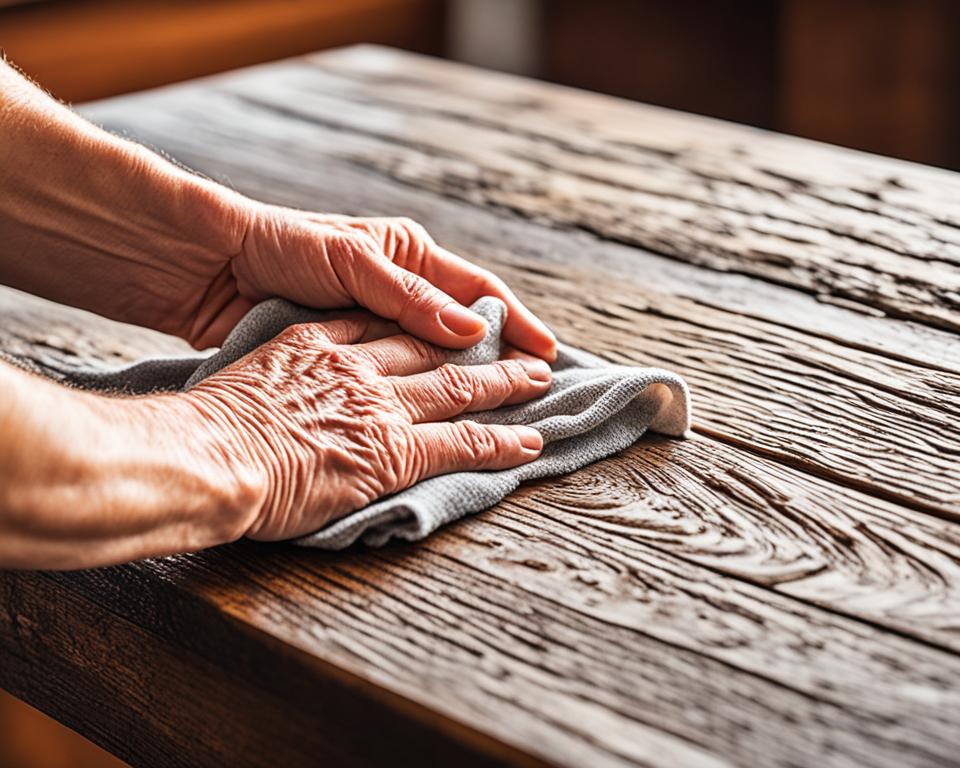
| Mistake | Effect |
|---|---|
| Using regular soap and water | Can cause warping and damage |
| Using cleaning products that require heavy dilution | Chemical reactions with wood |
| Using abrasive tools and harsh scrubbing | Causes scratches and damage to the surface |
| Excessive moisture | Warping, discoloration, and potential mold growth |
| Neglecting regular dusting and maintenance | Buildup of dust and accelerated deterioration |
| Exposing furniture to direct sunlight | Fading and deterioration of the wood |
Conclusion
Caring for antique wood furniture requires proper cleaning and maintenance techniques to preserve its beauty and value. By following the tips and tricks provided in this guide, you can ensure that your antique pieces remain in excellent condition for years to come.
Remember to always test any cleaning products on inconspicuous areas first and consult an expert if you are unsure about the best approach for your specific furniture. With the right care, your antique wood furniture will continue to be a cherished and beautiful part of your home.
In conclusion, maintaining antique wood furniture is a rewarding and worthwhile endeavor. Regular cleaning, using appropriate products, and protecting the furniture from harmful elements are essential steps in preserving its integrity. By investing time and effort into caring for your antique pieces, you can enjoy their timeless beauty and proudly pass them down through generations.
FAQ
Why is cleaning antique wood furniture important?
Cleaning antique wood furniture is crucial for preserving its value and appearance. Proper care helps bring out its natural beauty and protects it from damage.
How do I determine the wood finish of my antique furniture?
You can determine the wood finish by conducting a simple test using denatured alcohol. Apply a small amount of denatured alcohol to an inconspicuous area and observe how the wood reacts.
What supplies do I need to clean antique wood furniture?
You will need oil soap, cotton cloths, a small mixing bowl, measuring cup, fork or whisk, and rubber gloves to create a cleaning solution.
How do I clean antique wood furniture?
Wet a cloth with the cleaning solution and clean the furniture following the wood grain using circular motions. Afterward, make sure to dry the furniture thoroughly to prevent moisture damage.
How do I clean antique wood furniture with mildew?
Clean the furniture with a soft cloth, then mix equal parts oil and vinegar to create a cleaning solution. Apply the solution to the wood and wipe away the loosened mildew.
Should I wax my antique wood furniture?
Waxing your antique wood furniture can provide an additional layer of protection and enhance its beauty. After cleaning, apply furniture wax and buff it with a soft, dry rag.
How can I deodorize my antique wood furniture?
You can use natural deodorizers such as volcanic rocks or baking soda placed inside the furniture to absorb odors. Address any underlying causes of the odor to prevent future issues.
Can I use white spirit for deep cleaning antique wood furniture?
White spirit can be used for deep cleaning, but caution should be exercised as it is a harsh solvent. Perform a spot test first to ensure it doesn’t damage the finish.
Are there general tips for cleaning antique wood furniture?
Avoid washing with water, use coasters or placemats, and regularly dust and polish the furniture to keep it looking its best.
What should I avoid when cleaning antique wood furniture?
Avoid using normal soap and water, as well as cleaning products that require heavy dilution. Consult a furniture expert if unsure about the best cleaning methods.

